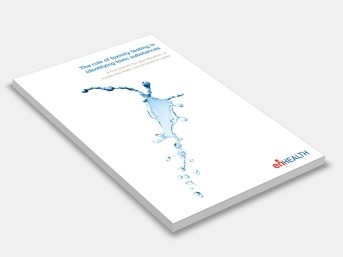The role of toxicity testing in identifying toxic substances
Environmental Health Standing Committee (enHealth) of the Australian Health Protection Principal Committee
The Australian Drinking Water Guidelines provide guidance on acceptable drinking water concentrations of recognised toxicants. While the guidelines are extensive, not all possible natural and anthropogenic toxicants are included. Chemical monitoring alone may therefore be insufficient to identify all potential hazards, and additional methods may be required. The need to embark upon extensive toxicity identification should be carefully assessed at the outset, and could be driven by factors such as the presence of a contaminant of uncertain toxicity (prospective approach) or well-defined human health impacts or a demonstration of ecological toxicity such as deaths of fish or other aquatic fauna for which all other plausible causes have been considered and eliminated (retrospective approach).
Toxicity testing (Chapter 2) can identify toxicants by their biological activity and/ or their effect on biological systems, and offer an additional tool for water quality monitoring and risk assessment. Toxicity can be tested at the cellular levels via in vitro bioassays and in whole organisms via in vivo bioassays. These methods of course also have their limitations, and it is important to understand that toxicity in a cell or a non-human species does not necessarily indicate a risk to humans or other organisms. However, a combination of toxicity testing and chemical analysis can provide a powerful tool for investigative water quality monitoring (Chapter 3). If toxicity is discovered or suspected in source waters, it is necessary to determine the identity of the toxicant to determine what (if any) risks are posed to human health.
Toxicity identification evaluation procedures (Chapter 4) are based on a combination of chemical fractionation and toxicity testing, and can often identify the chemical class or even the identity of the toxicant. They are conducted in three phases: toxicity reduction evaluation (phase I) attempts to identify the class of the toxicant (e.g. metal, volatile compound, organic); toxicity identification (phase II) involves extensive chemical characterisation of the toxic fraction to identify the toxicant; and toxicity confirmation (phase III) verifies that the toxicant has indeed been properly identified.
Once a chemical is identified, a drinking water guideline value can be obtained from the published Australian guidelines. If no guideline value exists, an interim value can be derived from the available toxicological information and compared with the likely exposure from drinking water to determine if the toxicant is likely to pose a risk to human health (Chapter 5). It is important to understand the limitations of all available evidence to produce a meaningful risk assessment.
Contents:
List Of Abbreviations
Executive Summary
1: Introduction
2: Toxicity Testing
3: Screening For Toxic Compounds In Water
4: Toxicity Identification Evaluation
5: How Toxic Is It To Humans?
6: Conclusions
7: References
List Of Figures
Figure 1: A Continuum Of Toxicity
Figure 2: Proposed Toxicity Testing Framework (Modified From NEPC 2008)
Figure 3: Example Of Sample Manipulation In Toxicity Reduction Evaluation
Figure 4: Risk Assessment Model Proposed In enHealth (2004)
Figure 5: Step-Wise Decision Tree To Adopt A Drinking Water Guideline For A New Chemical
Figure 6: Concentration Of A Hypothetical Chemical As A Percent Of The Source Water Concentration
